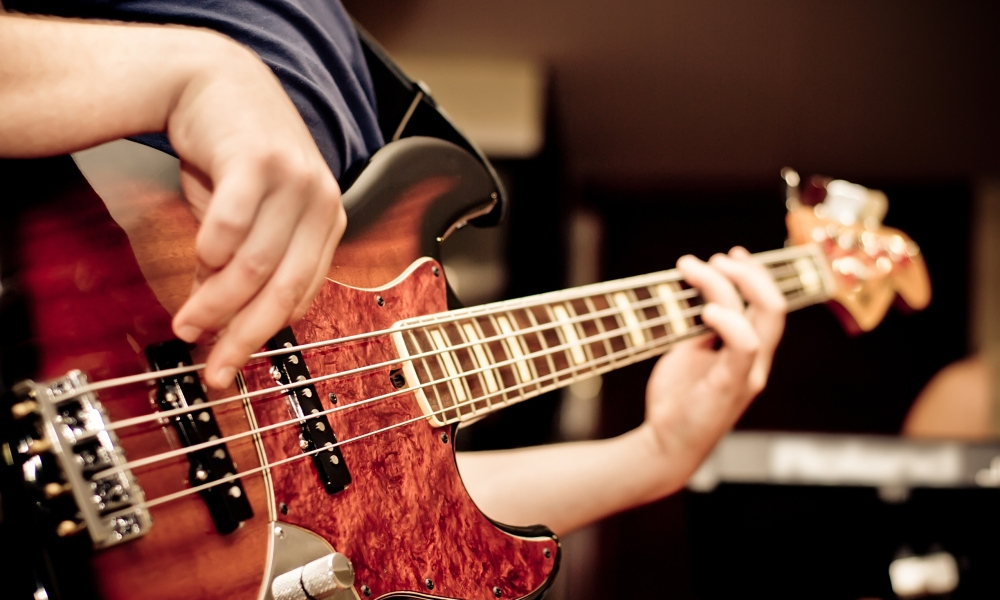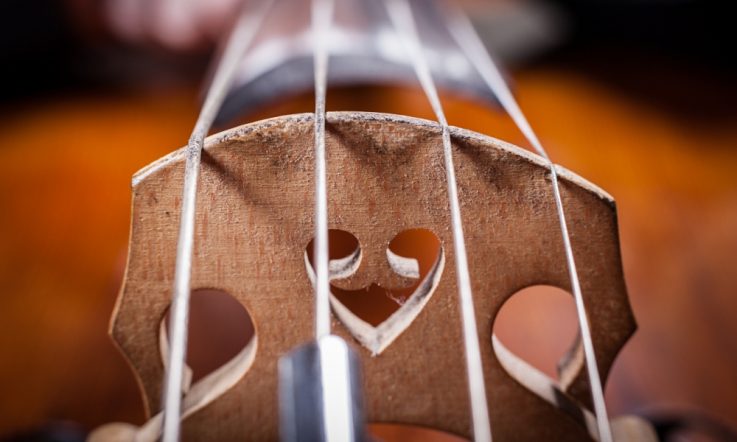It is not unusual for teachers of Music to form a close working relationship in secondary schools. It comes with the territory and their experiences of collegiality and developing musicianship in orchestras, bands or vocal groups.
As two school-based teachers of Music at Craigslea State High School, a large suburban secondary school in Queensland, Genevieve and Teresa were concerned about the quality of the students' home practice of chosen instruments, including voice. Engaging students in individual practice that is beneficial to the quality of the performance is a critical responsibility. Both teachers believed that the practice by students at home needed improvement, especially the technical skills, such as rhythm, progression, or systematic elimination of errors.
Homework is a familiar part of schooling and is recommended within the school's pedagogical framework, Classroom instruction that works (Pitler & Stone, 2012). Despite being so traditional and so necessary to the study of musical instruments, homework by Craigslea music students suffered from a lack of discipline. To address the problem, the teachers decided to focus on the nature of homework – practice, in this case – thereby addressing the problem, as well as meeting the school's requirement for collaborative professional development with peers.
This professional development within a Peer Learning Group (PLG) involved meetings, discussion, observation and reflection, supported by Patsy in her role of Master Teacher/facilitator of action research. Initially, discussion was about the work of Susan Cain (2012) in her text Quiet, in which she defined deliberate practice as being solitary, requiring intense concentration and motivation, as well as ‘working on the task … most challenging to you personally' (Cain, 2012). Her core intent in the text was to emphasise the contrast between introverts and extroverts, supporting consideration in this study of how students saw themselves as musicians.
It was agreed that the ‘gigs every night' life of a professional musician is a myth and that the students lacked understanding of the solitary nature of a musician's practice. In addition, they needed to accept that the deliberate practice might very well be ‘effortful' and not ‘inherently enjoyable' (Schraw, 2005, p.396). Research into the theory of deliberate practice confirmed that the strategy has the potential to improve both student performance and student mindset about what makes a musician.
The impact of deliberate practice
To assess the impact of the strategy, each Music teacher focused on a case study of a selected individual student, rather than the whole class. The intent was to develop a reflective account of each student, including a before and after evaluation of performance skills. The findings showed that it is possible to convince adolescents of the value of both solitude and deliberate practice when there is evidence of improvement.
One of the two students of Music in this study, a Year 11 student, chose to focus on voice for his performance assessment, although he was reasonably proficient on keyboard, acoustic guitar and viola. The other, a Year 12 student, played bass guitar.
Student A: Genevieve tells the story
I taught this student in Year 11 and Year 12 Music. He also learned bass guitar with a visiting instrumental teacher. His results up to the end of Term 1, Year 12, showed a ‘sound' (average) achievement for the dimension of Performance, working within the guidelines of the Queensland syllabus. My estimation of his level and rate of progress was that he needed necessary skills to improve his results, hence the strategy of deliberate practice was appropriate to introduce in Term 2.
When I approached A's instrumental teacher, he identified specific strengths and weaknesses for the student – his notational and pitch skills were excellent, but rhythmic skills were a problem. So, I knew what technical weaknesses needed attention. Analysing the problem led to a novel solution. The instrumental teacher identified exercises from a percussion tutoring book – Alfred's Drum Method Book 1 (Black and Feldstein 2004) – then demonstrated how the required rhythms could be played on single notes. Student A's interest was caught by the modelling and degree of importance we were giving to the need for deliberate practice of the specific exercises. In class, I hammered (metaphorically) the benefits of deliberate, solitary practice with all students so that strong communication of the same message came from both teachers. The class lesson included research evidence and case studies of experts who favoured deliberate practice. For example, students saw Sir Donald Bradman in his early days, developing cricket skills in front of a corrugated iron shed wall, using a stump of wood to hit the cricket ball.
In the class with the instrumental teacher, I acted as observer as Student A played the eight notes of a scale using the rhythms required in the exercises. It was not easy for him, because the accents of the rhythms fell on unexpected notes. Student A played the rhythms giving strong emphasis to the unexpected beats, then again so that his teacher could correct and refine technique for each exercise. The teacher clapped and counted while the student played. Clearly this was a critical stage of the process of putting a solution to the problem. Hence, there was more attention to the exercises, using staccato on one note, with spoken rhythms being demanded so that understanding and accuracy were achieved.
Using the voice to say the rhythms developed improved skill in reading notation, what the teacher referred to as automatic application of a skill. He emphasised the three types of vocalising to be used – numbers, time names, sound names – perhaps at different times depending on the type of work. All this teaching and learning ensured that there was sufficient scaffolding for Student A to be able to practice with intent by himself.
I could see that Student A was putting effort into the rhythmic exercises as he acknowledged the reasoning behind them. Gradually, more and more challenging exercises were given.
He was ready for deliberate practice following this individual attention to skill building, something that would greatly benefit later work in ensembles. He applied himself to practice in these skills so effectively that the evaluation of his results at the end of Term 2 showed improvement not only in the bass guitar assessment (A to high A), but also in his Music (B to B+) and Music Extension (C to B). Student A's self-evaluation provides a satisfying conclusion to his story: ‘I am now able to read complex rhythms automatically and so I am able to play them more confidently.'
Student B: Teresa tells the story
Student B was in Year 11 and a high achiever, one who in the Queensland system would be a possible VH student at exit (one who achieves a Very High Level of Achievement under the Queensland syllabus). This was because his performances were fluent, while his expressions of music ideas and stylistic characteristics were pleasing. The targeted weakness was his vocal technique, in specific areas, although he met the Performing criterion specified in the syllabus very capably. The analysis of his technique indicated that articulation, diction and breath control required work. In particular, he could not apply music elements of diction and vocal projection.
The solution to the problem was not simply in adjusting an incorrect mouth position and increasing breath support, but also in providing scaffolding for the solitary and repetitive nature of the practice. I set up a table in which Student B was asked to record the exercise and the length of time given to some basic exercises I modelled for him. As one vocal technique was mastered, another could be added so as to build a rehearsal repertoire.

I talked with Student B about the benefits of solitary practice and the improved results it could bring in the specific areas needing attention. That conversation was very much about convincing the student of the benefits of putting in the time and effort, as well as working towards a goal. This was made explicit because Student B worked from a text titled Successful Warmups, Book 1 (Telfer, 1995) in which I identified a vocal exercise for each day. There was the option of practicing one particular exercise for any length of time, such as a day or a week.
Modelling of the exercises helped Student B to understand how to practise, as well as demonstrating the benefits in a practical way. He was able to rehearse a little and convince me that he was competent enough to engage in solitary practice, which he did so proficiently that evaluation of his Term 2 performance showed a movement from B+ to A-. What was most pleasing was that this student joined the local suburban male choir. He has continued to apply deliberate practice to improve his vocal technique. It would seem that the benefits are providing continued motivation for further effort and goal-setting.
What we learned
Deliberate practice is not an approach limited to the subject Music, nor to musicians. However, it is particularly appropriate for a student of Music, if the student is taken through the stages of a scaffolded process. First, an error or problem can be identified and analysed; second, a solution is modelled; third, benefits are made evident; fourth, the identified skills are demonstrated with some level of confidence by the student; fifth, they engage in solitary, sustained deliberate practice; and finally, there is subsequent evaluation, which may or may not suggest refocussing on a stage of the process.
What emerged from this investigation was that students can change mindsets about what is necessary to demonstrate a skilled performance. Clearly improved results – a necessary aspect of the evidence – assisted the change in mindset. Such results encourage the teachers at Craigslea to continue implementing the strategy of deliberate practice in their classrooms, but the best result was that the students gained personal satisfaction from their creativity and performance, as well as commitment to ongoing learning as musicians.
References
Black, D. & Feldstein, S. (2004). Alfred's drum method. Book 1. Los Angeles, California, Alfred Music Publishing.
Cain, S. (2012). Quiet: The power of introverts in a world that can't stop talking. London, Penguin.
Pitler, H., & Stone, B. (2012). A handbook for classroom instruction that works. Moorabbin, Vic., Harker Brownlow.
Schraw, G. (2005). An interview with K. Anders Ericsson. Educational Psychology Review 17(4): 389-312.
Telfer, N. (1995). Successful warmups. Book 1. San Diego, California, Neil A. Kjos Music Co.
These teachers talked with students about the benefits of solitary practice and the improved results it could bring in specific areas needing attention. How often do you set aside time to have these sorts of conversations with your own students? How does this help them in working towards a specific goal?
The students in this case study were encouraged to accept that the deliberate practice of their chosen instruments might very well be ‘effortful’ and not ‘inherently enjoyable’. As a music teacher, in what ways do you encourage students to persist with their deliberate practice?



